Grandfather Frost And Snow Maiden Bring Gifts On New Year’s Eve
A. Sutherland - AncientPages.com - Ded Moroz (Grandfather Frost) is originally a character from the tradition of the East Slavs including the Belarusian, Russian, and Ukrainian people.
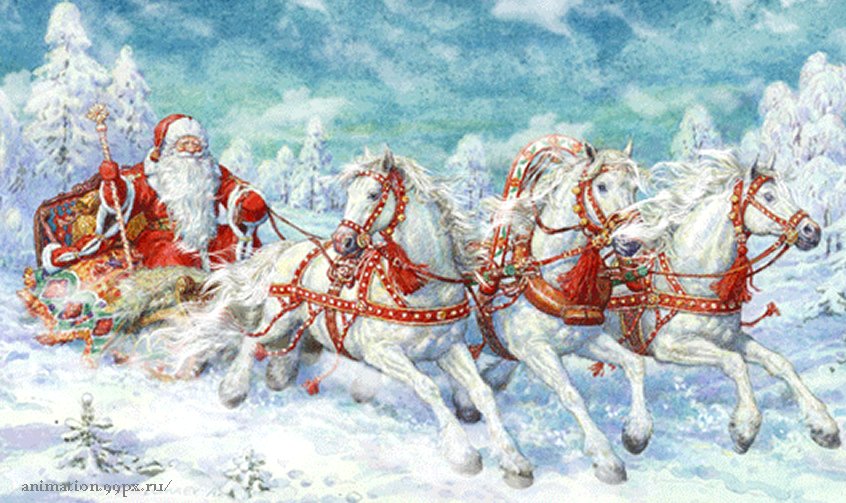 In old Christmas stories, his transportation means was a sleigh drawn by three white horses.
In old Christmas stories, his transportation means was a sleigh drawn by three white horses.
Assisted by his granddaughter the Snow Maiden ('Snegurochka'), he brings gifts on New Year's Eve.
His name literally means: Grandfather Frost and this very popular fictional figure is very similar to Father Christmas and Santa Claus. He is usually depicted as a gray-haired and sturdy older man with a long beard, and a magical staff in his hand. He is dressed in a red coat but sometimes, he is also seen in blue and occasionally in white. His head covering is a fur hat.
In old Christmas stories, his transportation means (the so-called ‘troika’) was a sleigh drawn by three white horses. Today, Ded Moroz uses other modes of transportation including helicopters, cars, trams, and he is not climbing down chimneys, as ancient stories tell. He must deliver many gifts to children so it’s much more comfortable for him to enter the houses through the door.
 Beautiful and colorful Russian figures participate in friendly Santa summits, sometimes in a real ice cave hewn in permafrost. Image credit: Planeta Yakutia, Satal Tour via Siberian Times
Beautiful and colorful Russian figures participate in friendly Santa summits, sometimes in a real ice cave hewn in permafrost. Image credit: Planeta Yakutia, Satal Tour via Siberian Times
In this tradition, he comes with gifts personally or leaves them under the Christmas tree.
Beautiful Snow Maiden Assists Grandfather Frost
Traditionally, children need to show him how good they are, often reciting a poem or singing a song, before they can get a gift. The beautiful Snow Maiden, ('Snegurochka'), a character from an ancient fairy tale, always assists him.
Initially, she arose as a character from ancient fairy tales and wore white garments and a crown, decorated with silver and pearls. Her modern winter coat is sometimes blue, white, red, or silver and her crown is occasionally replaced by a beautiful, embroidered cap decorated with fur.
According to Russian folklore, Snegurochka (or ‘Snow Maiden’) arose from the snow. The poor peasants wanted to have a daughter, but they couldn't, so they formed a snow doll and the doll miraculously came to life. By the reign of the last Emperor of Russia, Nicholas II (1868 - 1918), the Snegurochka had become associated with winter holiday celebrations. The tradition continued until the Soviet Union banned religious holidays in the years after the Revolution. Stalin permitted Grandfather Frost to return two decades after the Russian Revolution, and this Christmas tradition remains until today.
Snegurochka is considered one of the most attractive female characters in Russian culture. She had become Father Frost’s granddaughter (instead of his daughter), his assistant, and a direct link to children.
 Snegurochka is a snow maiden from a traditional Russian fairy tale.
Snegurochka is a snow maiden from a traditional Russian fairy tale.
The seat of the Belarusian DedMroz is said to be in the Bialowieza Forest, one of the last and largest remaining parts of the immense primeval forest that once covered the entire European lowlands. It is located on the border between Poland and Belarus, and his residence in Russia is believed to be the town of Veliky Ustyug, Vologda Oblast, in Northwestern Russia.
See also:
Yule Goat Is A Scandinavian Christmas Tradition Based On Norse Legends And Worship Of God Thor
Ancient Tradition And True Meaning Of Candy Canes
Currently, Ded Moroz is not a negative figure, but based on many old depictions and stories, he was described as a bad old man and cruel sorcerer.
According to legends, he liked to freeze people and kidnap children and put them in his giant bag. Parents, wanting to recover them, had to give him gifts in return. It reminds us of the story of the Icelandic troll, Gryla, when she wandered around to catch obedient children to her sack.
Over time, under the influence of Orthodox traditions, the character of Grandfather Frost changed. He took over some of the qualities of Santa Claus, also known as Father Christmas, Saint Nicholas, Saint Nick, among others.
His appearance in the area has been traditionally connected with the onset of frost, but Ded Moroz himself became a better person. He still wandered around the forest, controlling the frost and bringing gifts to the good, and punishing if necessary. Some invited him to the Christmas Eve dinner, to which he came in his ‘troika’.
During Soviet times, Christmas was initially banned in Russia and so was Ded Moroz, because Russian leaders were against any religious manifestation. If people did want to celebrate Christmas, they had to do it in secret just in their families. Only 20 years later Ded Moroz returned to the country and New Year’s celebrations became public. Since then Ded Moroz and Snegurochka appear on New Year’s Eve.
Many of the European cultures, celebrate Christmas on December 25th; the Russians, on the other hand, celebrate an 'Orthodox Christmas' exactly 13 days - on January 7th.
During Christmas on January 7th, the Russians look forward to Ded Moroz; especially children wait for his coming.
Written by – A. Sutherland - AncientPages.com Senior Staff Writer
Copyright © AncientPages.com All rights reserved. This material may not be published, broadcast, rewritten or redistributed in whole or part without the express written permission of AncientPages.com
More From Ancient Pages
-
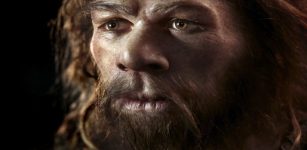 8 Billion People: How Different The World Would Look If Neanderthals Had Prevailed
Featured Stories | Nov 18, 2022
8 Billion People: How Different The World Would Look If Neanderthals Had Prevailed
Featured Stories | Nov 18, 2022 -
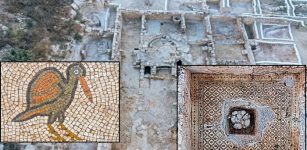 1,500-Year-Old “Church of the Glorious Martyr” With Beautiful Mosaic Unearthed Near Jerusalem
Archaeology | Oct 24, 2019
1,500-Year-Old “Church of the Glorious Martyr” With Beautiful Mosaic Unearthed Near Jerusalem
Archaeology | Oct 24, 2019 -
 6,000-Year-Old Village Unearthed In Kurdestan
Archaeology | Apr 12, 2016
6,000-Year-Old Village Unearthed In Kurdestan
Archaeology | Apr 12, 2016 -
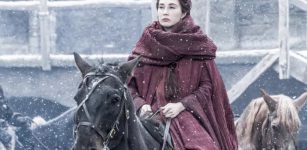 Melisandre, The Red Woman: The History Behind Game Of Thrones’ Mysterious Mystic
Featured Stories | Jun 19, 2019
Melisandre, The Red Woman: The History Behind Game Of Thrones’ Mysterious Mystic
Featured Stories | Jun 19, 2019 -
 Nakano Takeko – Courageous Female Samurai Who Died Tragically While Defending The Aizu-Wakamatsu Castle
Featured Stories | Apr 24, 2021
Nakano Takeko – Courageous Female Samurai Who Died Tragically While Defending The Aizu-Wakamatsu Castle
Featured Stories | Apr 24, 2021 -
 Anne Askew: Woman Of Great Courage, Strong Beliefs And Principles Who Was Arrested For Heresy, Imprisoned, Tortured And Burnt At The Stake
Featured Stories | Feb 15, 2019
Anne Askew: Woman Of Great Courage, Strong Beliefs And Principles Who Was Arrested For Heresy, Imprisoned, Tortured And Burnt At The Stake
Featured Stories | Feb 15, 2019 -
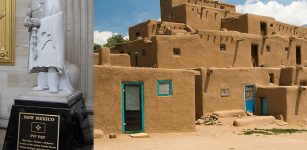 On This Day In History: Pueblo Indians Capture Santa Fe From The Spanish – On August 21, 1680
News | Aug 21, 2016
On This Day In History: Pueblo Indians Capture Santa Fe From The Spanish – On August 21, 1680
News | Aug 21, 2016 -
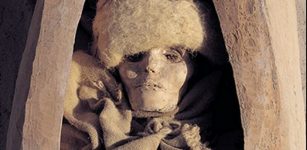 Mysterious Sleeping Beauty Of Loulan Mummy Is Still Perfectly Preserved After 3,800 Years!
Civilizations | Oct 30, 2014
Mysterious Sleeping Beauty Of Loulan Mummy Is Still Perfectly Preserved After 3,800 Years!
Civilizations | Oct 30, 2014 -
 Rare 1,000-Year-Old Viking Wooden Bowl Found By Young Boy
Archaeology | Oct 24, 2022
Rare 1,000-Year-Old Viking Wooden Bowl Found By Young Boy
Archaeology | Oct 24, 2022 -
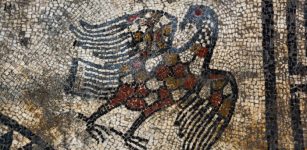 Beautiful Mosaics Reveal Ancient Secrets Of Unknown Roman City Ucetia In France
Archaeology | Apr 7, 2017
Beautiful Mosaics Reveal Ancient Secrets Of Unknown Roman City Ucetia In France
Archaeology | Apr 7, 2017 -
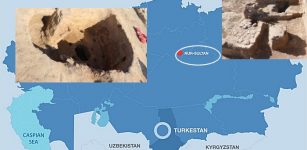 New Historical Finds Near Khoja Ahmed Yassawi Mausoleum In Turkestan – Uncovered
Archaeology | Aug 20, 2020
New Historical Finds Near Khoja Ahmed Yassawi Mausoleum In Turkestan – Uncovered
Archaeology | Aug 20, 2020 -
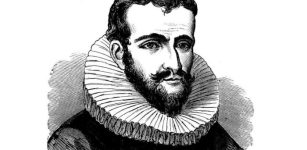 On This Day In History: Crew Of Discovery Launches Mutiny Against Captain Henry Hudson – On June 22, 1611
News | Jun 22, 2016
On This Day In History: Crew Of Discovery Launches Mutiny Against Captain Henry Hudson – On June 22, 1611
News | Jun 22, 2016 -
 World’s Oldest Dictionaries Are 4,500-Year-Old Cuneiform Tablets Discovered In Ebla
Ancient History Facts | Aug 19, 2016
World’s Oldest Dictionaries Are 4,500-Year-Old Cuneiform Tablets Discovered In Ebla
Ancient History Facts | Aug 19, 2016 -
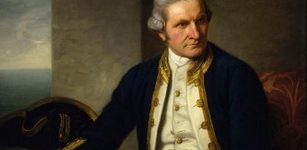 On This Day In History: Captain James Cook Spotted The East Coast Of Australia – On Apr 19, 1770
News | Apr 19, 2016
On This Day In History: Captain James Cook Spotted The East Coast Of Australia – On Apr 19, 1770
News | Apr 19, 2016 -
 Neanderthals In Swabian Jura Used Complex Tool-Making Techniques 45,000 Years Ago
Archaeology | Sep 8, 2021
Neanderthals In Swabian Jura Used Complex Tool-Making Techniques 45,000 Years Ago
Archaeology | Sep 8, 2021 -
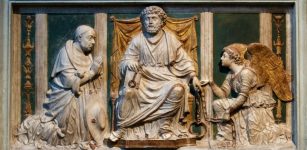 Nicholas Of Cusa – A Medieval Scholar And Mystic With Highly Unorthodox Ideas
Featured Stories | Aug 13, 2021
Nicholas Of Cusa – A Medieval Scholar And Mystic With Highly Unorthodox Ideas
Featured Stories | Aug 13, 2021 -
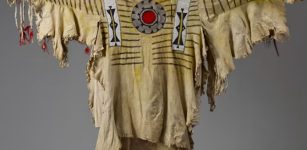 Historic Event – Exeter Museum Returns Ceremonial Dress Of Famous Chief Crowfoot To Canada’s Siksika People
Artifacts | May 20, 2022
Historic Event – Exeter Museum Returns Ceremonial Dress Of Famous Chief Crowfoot To Canada’s Siksika People
Artifacts | May 20, 2022 -
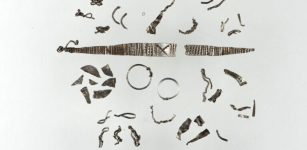 Magnificent Viking Treasure Accidently Found In Norway – Was It Hidden Or Sacrificed?
Archaeology | Nov 3, 2022
Magnificent Viking Treasure Accidently Found In Norway – Was It Hidden Or Sacrificed?
Archaeology | Nov 3, 2022 -
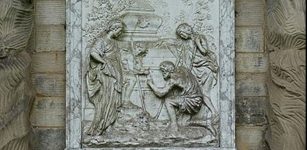 Shepherd’s Monument Mystery: Yet Another Undeciphered Inscription
Featured Stories | Jun 26, 2023
Shepherd’s Monument Mystery: Yet Another Undeciphered Inscription
Featured Stories | Jun 26, 2023 -
 Lunar Society: Great Scientists Of The 18th Century Who Changed The World
Featured Stories | Jul 13, 2018
Lunar Society: Great Scientists Of The 18th Century Who Changed The World
Featured Stories | Jul 13, 2018
